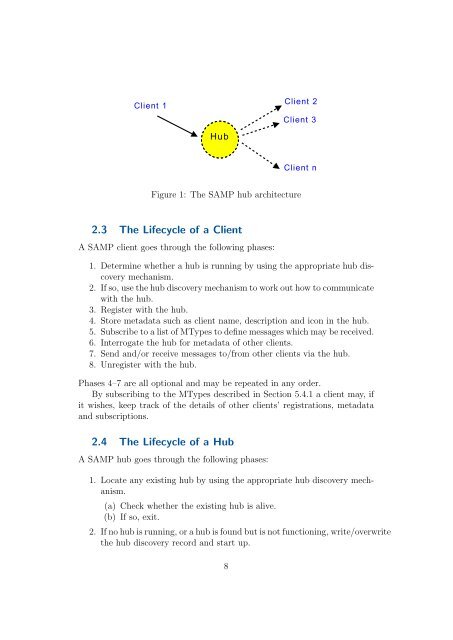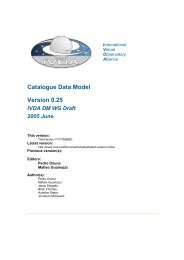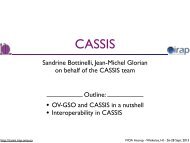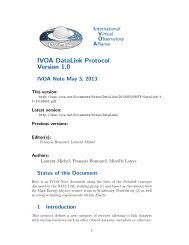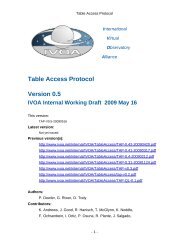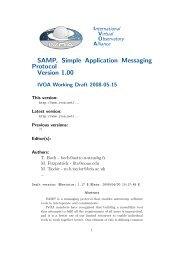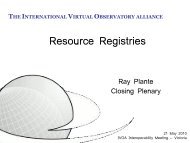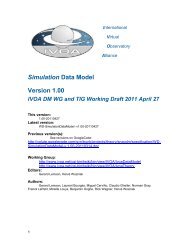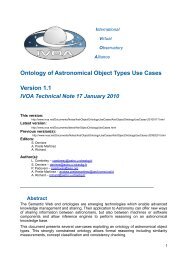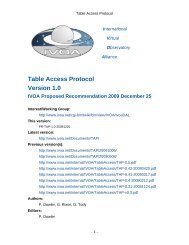SAMP â Simple Application Messag- ing Protocol Version 1.11 - IVOA
SAMP â Simple Application Messag- ing Protocol Version 1.11 - IVOA
SAMP â Simple Application Messag- ing Protocol Version 1.11 - IVOA
You also want an ePaper? Increase the reach of your titles
YUMPU automatically turns print PDFs into web optimized ePapers that Google loves.
Client 1Client 2Client 3HubClient nFigure 1: The <strong>SAMP</strong> hub architecture2.3 The Lifecycle of a ClientA <strong>SAMP</strong> client goes through the follow<strong>ing</strong> phases:1. Determine whether a hub is runn<strong>ing</strong> by us<strong>ing</strong> the appropriate hub discoverymechanism.2. If so, use the hub discovery mechanism to work out how to communicatewith the hub.3. Register with the hub.4. Store metadata such as client name, description and icon in the hub.5. Subscribe to a list of MTypes to define messages which may be received.6. Interrogate the hub for metadata of other clients.7. Send and/or receive messages to/from other clients via the hub.8. Unregister with the hub.Phases 4–7 are all optional and may be repeated in any order.By subscrib<strong>ing</strong> to the MTypes described in Section 5.4.1 a client may, ifit wishes, keep track of the details of other clients’ registrations, metadataand subscriptions.2.4 The Lifecycle of a HubA <strong>SAMP</strong> hub goes through the follow<strong>ing</strong> phases:1. Locate any exist<strong>ing</strong> hub by us<strong>ing</strong> the appropriate hub discovery mechanism.(a) Check whether the exist<strong>ing</strong> hub is alive.(b) If so, exit.2. If no hub is runn<strong>ing</strong>, or a hub is found but is not function<strong>ing</strong>, write/overwritethe hub discovery record and start up.8


